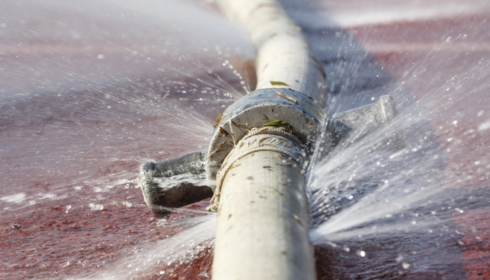There’s something oddly satisfying about setting up a home. Even if it’s just swapping out a water heater or finally hooking up that gas stove you’ve had sitting in the box for months. You hear the click, feel the connection, and—boom—everything just works. But here’s the thing most folks don’t talk about: beneath all those shiny finishes and working buttons is a whole lot of behind-the-scenes pipework that makes it all possible.
Plumbing, gas lines, water connections—these aren’t the glamorous parts of your home story. But they’re the backbone. And when done right? You don’t even think about them. When done wrong… well, you’ll think about them a lot.
Starting Fresh? Do It Right From Day One
Whether you’re building from scratch or renovating a tired old kitchen, few things feel better than a new installation done properly. That moment when everything fits, water flows where it should, and nothing drips—that’s peace of mind right there. It’s not just about functionality; it’s about building trust with your space.
But not all installs are created equal. That shortcut you saw in a video? It might work for five minutes… or five days. But weeks down the road, when you’re mopping up a mystery puddle or chasing a gas smell you swear wasn’t there yesterday, you’ll wish you’d gone pro.
So here’s the rule of thumb: if it connects to water, gas, or anything remotely combustible—get a licensed pro. Not your cousin with a wrench and a YouTube account. Do it right. Sleep better.
The Silent Champions: Behind Every Machine Is a Line That Makes It Work
Dishwashers, gas stoves, washing machines—they’re just oversized paperweights without the right connections. Ever tried running a dryer with no gas line? Or installing a fridge with no water hook-up for the ice maker? It’s… disappointing, to say the least.
That’s where the appliance line comes into play. It’s the unsung hero of your laundry room or kitchen—connecting your machines to the lifeblood they need to function. These lines might be flexible hoses, copper tubing, or specialized gas connectors, but they all serve the same purpose: bridging the gap between utility and usability.
Here’s the kicker: when installed poorly, they’re also one of the top sources of slow leaks, hidden damage, and appliance malfunctions. So while they may look simple, don’t underestimate their role. That tiny hose might just decide the fate of your Sunday roast or the life expectancy of your washing machine.
When the Worst Happens: Be Ready for the Oh-Crap Moments
Now let’s talk about the heart-racing stuff. The panic-inducing, “where’s that water coming from?!” kind of moment. Because let’s face it—no matter how great the install, life happens. Pipes burst. Fittings fail. Water finds a way. And when it does, time becomes the most valuable asset you have.
That’s where an emergency leak response setup makes all the difference. Whether it’s a burst pipe at 2 a.m. or a gas leak on a Sunday morning, knowing who to call and what to shut off could be the difference between a minor mess and a full-blown disaster.
The best pros don’t just patch the problem. They come prepared—thermal sensors, moisture detectors, line locators. They don’t panic. They don’t guess. They trace the issue fast, stop it at the source, and help you breathe again.
So even if you think you’ll never need it, save that emergency number. Stick it on the fridge. Program it in your phone. Because when that moment hits, you won’t want to be Googling in a puddle.
Little Things That Aren’t So Little
It’s always the smallest things that trip us up. A loose fitting. A cracked seal. A valve that “mostly works.” These don’t seem like much—until they are. Until they turn your newly renovated laundry room into a wading pool or trigger mold behind the cabinets.
That’s why seasoned pros obsess over the details. Not because they’re fussy. But because they’ve seen what happens when those details are ignored. Water is patient. Gas is silent. Both will find the tiniest flaw and exploit it without mercy.
So if your plumber spends an extra 15 minutes checking pressure or sealing a joint twice, let them. That’s not overkill—that’s wisdom.
Know Your Home’s Language
Every house has a way of talking to you. It might be a faint gurgle in the wall. A strange smell near the utility room. Or that slow drip-drip-drip behind the washing machine that only shows up when the cycle ends.
Listen. These are not normal quirks—they’re whispers from your home, asking for help. And while it’s tempting to dismiss them, or promise yourself you’ll “deal with it next weekend,” those small signs can quickly snowball into major repairs.
Trust your gut. If something feels off, it probably is. And catching it early can save you thousands, not to mention a whole lot of stress.
Building Relationships That Matter
Here’s something they don’t put in homebuyer brochures: your plumber (or gas installer, or leak repair pro) is just as important as your electrician or general contractor. Maybe even more.
They’re the ones who keep the heart of your home pumping—bringing in clean water, safely removing waste, making sure gas appliances run without danger. They’re the quiet backbone of every well-functioning house.
So build that relationship. Ask questions. Get their card. Refer them to friends. The best ones aren’t just workers—they’re guardians of your home’s safety and comfort.
Final Thoughts: Don’t Just Fix—Future-Proof
Good plumbing and gas work isn’t just about solving today’s problem. It’s about setting you up for years of smooth sailing. Whether you’re managing a new installation, connecting an overlooked appliance line, or panicking through an emergency leak response, every decision you make today echoes far into your home’s future.

